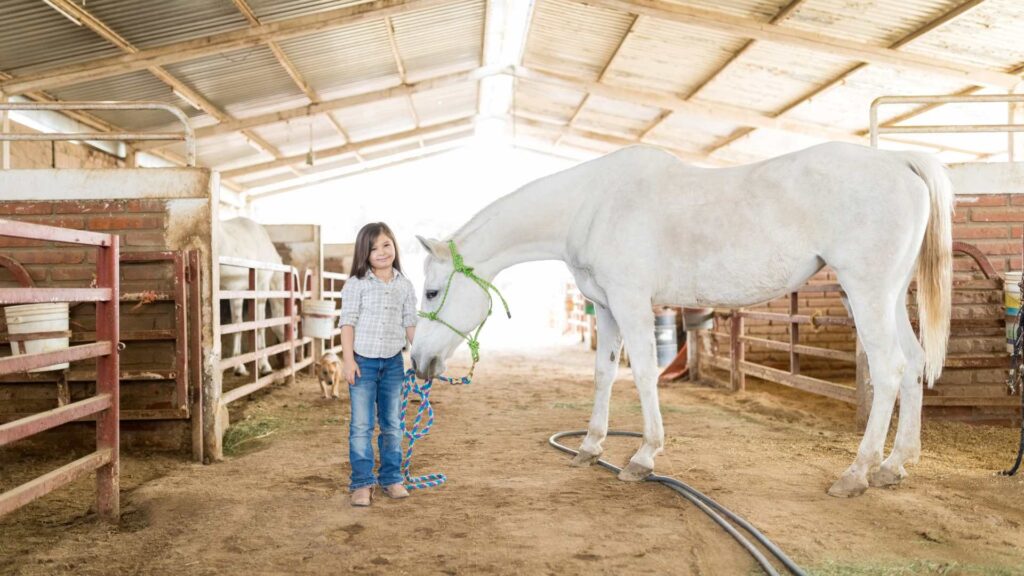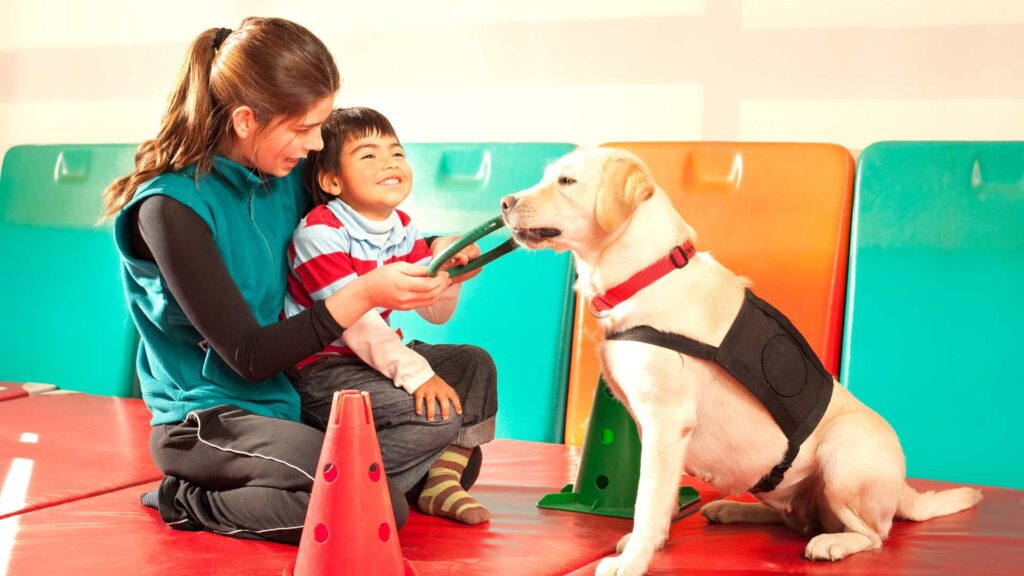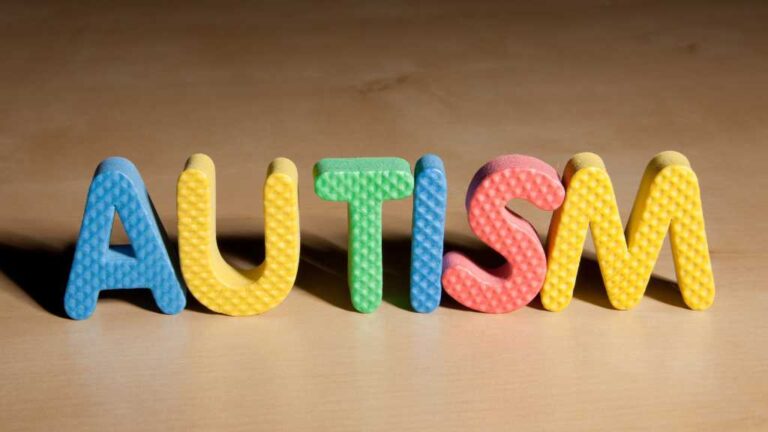Table of Contents
How do animals help with autism?
Autism is an increasingly recognized developmental disorder, marked by a significant prevalence, as statistics indicate that 1 in 36 eight-year-old children in the United States are diagnosed with ASD. However, to cater to the specific needs of individuals on the autism spectrum, caregivers can consider various therapeutic approaches, including pet therapy for autism.
For those seeking support for a loved one with autism, gaining insight into the array of available therapies and their benefits is crucial. If you’ve found yourself on this blog, you might be pondering, “How do animals help with autism?”
Animal-assisted interventions for autism provide a wide array of benefits, encompassing enhancements in physical and sensory capabilities and emotional management improvements. These advantages include diminished anxiety, bolstered social interactions and communication abilities, increased physical mobility, and the promotion of independence.
However, it’s essential to note that animal therapy for autism should only be pursued following a recommendation from a healthcare professional, considering any potential allergies or phobias.
At ABA Centers of Georgia, we prioritize a comprehensive strategy for supporting individuals with autism. We are committed to offering diverse support to neurodiverse families across Alpharetta, Atlanta, Buckhead, and Marietta through a broad spectrum of autism care services. Our philosophy centers around a holistic approach that nurtures every aspect of the individual, propelling them toward realizing their utmost potential through science-based and empathetic care.
This blog offers a guide to understanding the benefits of pet therapy for autism, exploring the variety of animal-assisted interventions for autism available, and discussing how animal therapy for autism can seamlessly blend with other therapeutic modalities, such as Applied Behavior Analysis (ABA) therapy.
What is Pet Therapy for Autism?
Animal-assisted therapy, also known as pet therapy for autism, is a form of therapeutic intervention that leverages animals trained to provide emotional or physical support to individuals with autism. These animals come with specialized training to perform a variety of tasks, such as detecting low blood sugar levels, aiding those with visual impairments, or even operating a wheelchair.

Historical records, including research shared by the National Library of Medicine, highlight that the integration of animals into therapeutic practices dates back to the previous century, with Sigmund Freud among the early adopters of this approach. Animal-assisted therapy represents a structured and purpose-driven form of psychotherapy. It utilizes animals as a medium to enhance the connection between the therapist and the client. This therapy delivers numerous benefits, encompassing physical, emotional, and social enhancements. It notably aids in advancing communication abilities and mitigating traits commonly associated with autism.
While dogs are frequently the preferred choice for animal-assisted therapy due to their friendly and affectionate characteristics, other animals like horses, cats, and dolphins can also participate effectively. In essence, animal therapy for autism introduces a unique and beneficial method to meet the therapeutic needs of individuals with ASD, fostering better interaction, improved communication, and enhanced emotional health.

8 Advantages of Animal Therapy for Autism
- Natural Attraction to Animals: Research from the Autism Research Institute has shown that many individuals in the autism spectrum prefer the company of animals to humans, suggesting an instinctive pull towards pet therapy for autism.
- Inherent Connection with Nature: The biophilia hypothesis posits that humans possess an inherent desire to connect with nature and living entities, making animal-assisted therapy for autism a naturally practical approach for enhancing the well-being of those with autism.
- Easier Social Engagement: Compared to the often complex social interactions with humans, animals present more straightforward social cues, easing communication for those with autism who might find human social nuances challenging. For instance, direct eye contact may be uncomfortable with people but engaging and less intimidating with animals.
- Sensory Benefits: Animals can offer a rich spectrum of sensory experiences in a calming presence, providing a unique form of comfort. Animal therapy can be especially beneficial for individuals with autism who may have heightened sensory sensitivities.
- Safe Emotional Outlet: Animals’ nonjudgmental nature offers a safe environment for individuals with autism to express their emotions freely, aiding in the development of emotional regulation and confidence in social settings.
- Fostering Deep Bonds: The capacity to form deep attachments to pets is shared between individuals with autism and neurotypical individuals alike, dispelling myths about the emotional depths of those on the autism spectrum and underscoring the potential for significant connections with animals.
- Encouraging Personal Growth: Pet ownership’s responsibilities and interactions can serve as significant incentives for personal growth, enhancing self-confidence, promoting independence, and providing a form of social support crucial for the thriving of individuals with autism.
- Comprehensive Benefits: Engaging in animal therapy for autism encompasses a wide range of benefits, from the unconditional love and companionship of animals fostering self-discovery and empowerment to supporting the overall mental, emotional, and physical well-being of those with autism.
Exploring Various Animal-Assisted Interventions for Autism

- Equine-Assisted Therapy: This approach to pet therapy for autism focuses on developing connections between individuals on the autism spectrum and horses within a managed, secure setting. Guided horseback riding provides sensory stimulation that can aid in enhancing coordination, balance, and muscle strength. Furthermore, interactions with the horse can deepen emotional and social skills, foster trust, and improve nonverbal communication abilities.
- Service Dogs for Assistance: Specifically trained service dogs offer invaluable assistance with daily tasks that may pose challenges for individuals with disabilities, including autism. Under the Americans with Disabilities Act(ADA), individuals have the right to train their dogs for assistance and accompany them in public areas. These service dogs can provide support with mobility, auditory or visual impairments, epilepsy, diabetes, and developmental challenges, offering companionship and emotional support and aiding in reducing anxiety across various environments.
- Therapy with Pets: Several psychotherapists opt to include gentle and friendly animals like dogs, cats, or rabbits in therapy sessions. The presence of these animals during therapy sessions for autism can significantly enhance emotional and social development. Pet therapy for autism introduces a comforting and encouraging atmosphere, facilitating communication between the therapist and the client and fostering empathy and emotional self-regulation.
- Emotional Support Animals (ESAs): Emotional support animals (ESAs) hold a special place within the spectrum of animal-assisted therapies for autism. These affectionate pets provide essential companionship, helping to alleviate stress, anxiety, and feelings of isolation commonly experienced by those with autism. The constant company of ESAs offers a soothing presence and a sense of stability during challenging periods that might provoke emotional distress in individuals on the spectrum.
- The Role of Family Pets: Household pets, including dogs and cats, can significantly impact family life, offering emotional support and companionship not only to family members with autism but to everyone in the household. Implementing pet care routines in the daily lives of those with autism is recommended as part of pet therapy for autism. Such activities encourage responsibility, routine, and engagement, contributing to a nurturing and inclusive family environment.
Enhancing ABA Therapy with Pet Therapy for Autism
Applied Behavior Analysis (ABA) therapy stands as a pivotal treatment method for individuals diagnosed with ASD. Utilizing the foundational principles of behavioral science, ABA therapists meticulously tailor interventions to meet the distinct needs of those on the autism spectrum. Through ABA therapy, there’s a focused effort on enhancing social, communication, and adaptive skills, alongside reducing problematic behaviors.
The synergistic combination of ABA therapy and pet therapy for autism introduces a dynamic and holistic strategy aimed at nurturing emotional connections, facilitating emotional regulation, and encouraging active engagement in settings that support healthy functioning and skill enhancement. This collaboration paves the way for individuals to generalize skills acquired during therapy to real-world situations, thereby significantly propelling their overall development.

Merging ABA therapy with animal-assisted interventions for autism carves out a tailored intervention pathway that not only caters to the unique needs of the client but also fosters an integrated approach, ensuring sustained progress over time. This fusion embodies a more personalized treatment avenue, leveraging the therapeutic benefits of pet therapy for autism to complement and enrich the structured framework of ABA therapy.
ABA Centers of Georgia: Comprehensive Autism Services
At ABA Centers of Georgia, we understand the importance of delivering a holistic treatment program for individuals with autism. Our approach through ABA therapy is both structured and tailored, aiming to address the core aspects of autism that may impede the comprehensive development of those on the spectrum. Integrating ABA therapy with pet therapy for autism, we offer a synergistic and thorough methodology that enhances communication, interaction, and emotional regulation skills, among others.
We take pride in guiding families as they explore the spectrum of neurodiversity, providing a range of autism services from early intervention and in-home ABA therapy for children and teenagers to autism evaluation and diagnostic services. Our dedicated ABA therapists craft individualized therapy plans, potentially incorporating complementary therapies like animal-assisted therapy, to ensure your child flourishes in all facets of their life.
To connect with an autism specialist, please call (855) 929-5058 or use our online contact form. We’re committed to offering you support and helping you understand the options available to impact your loved one’s life with autism positively.









